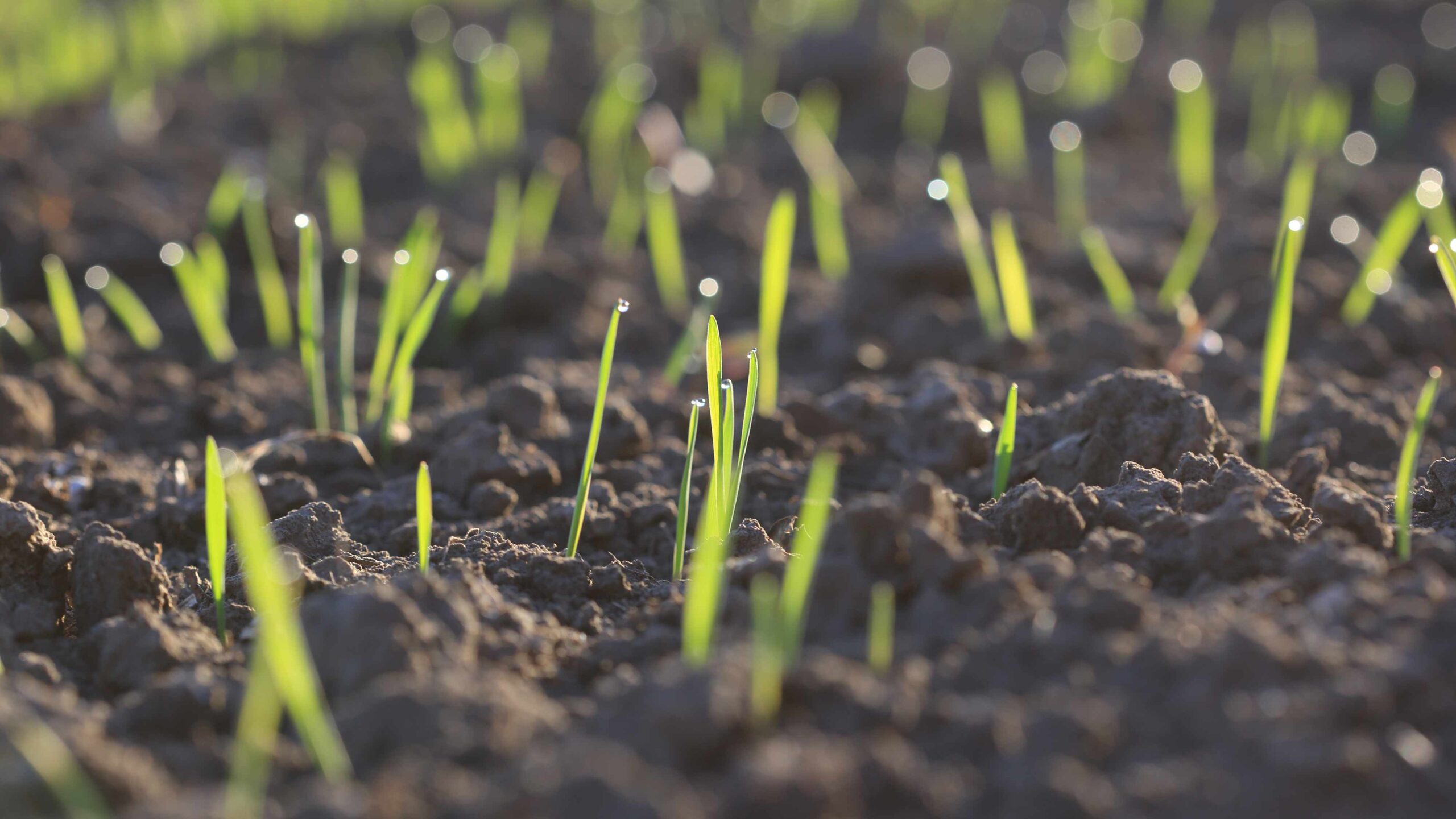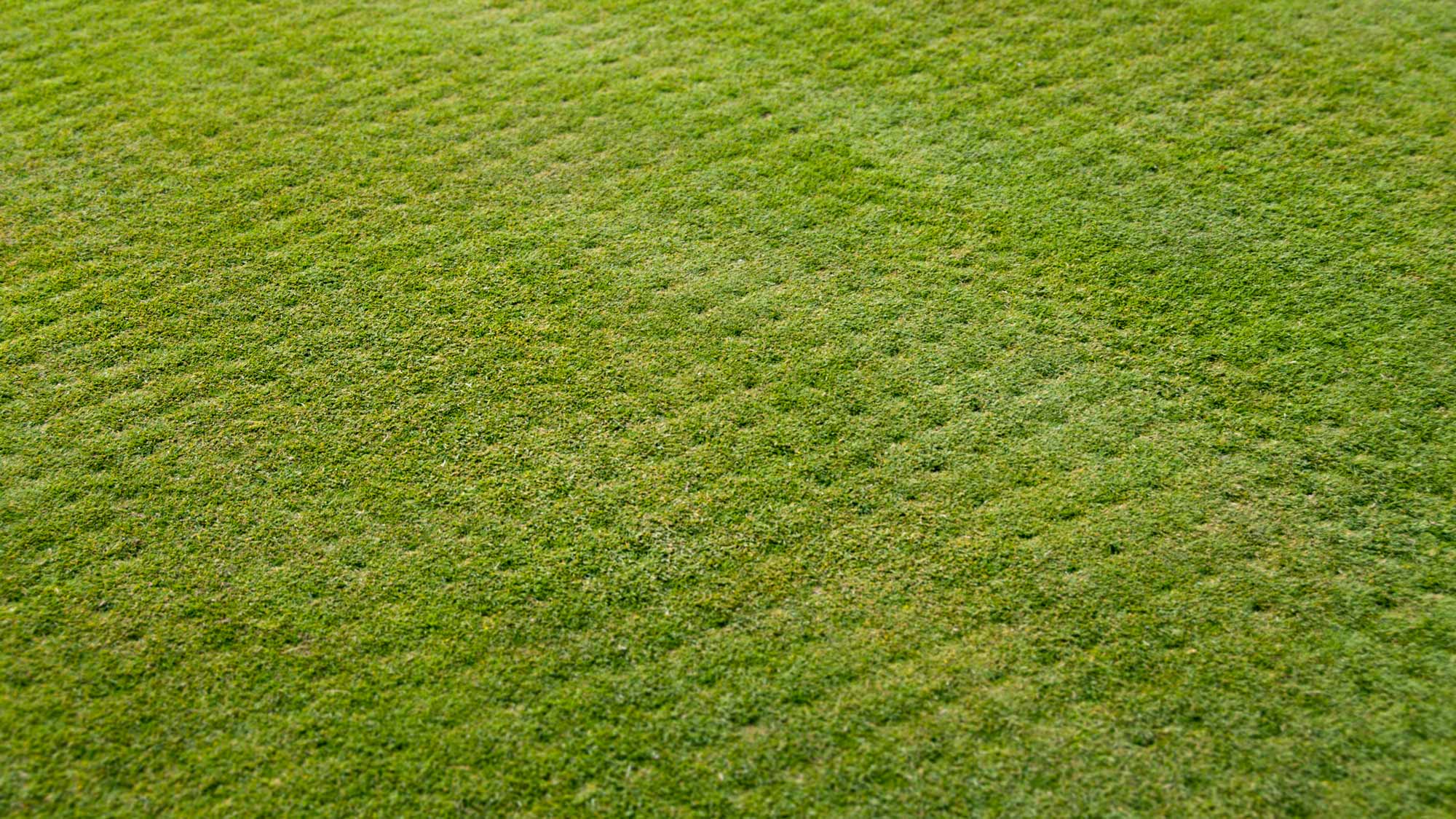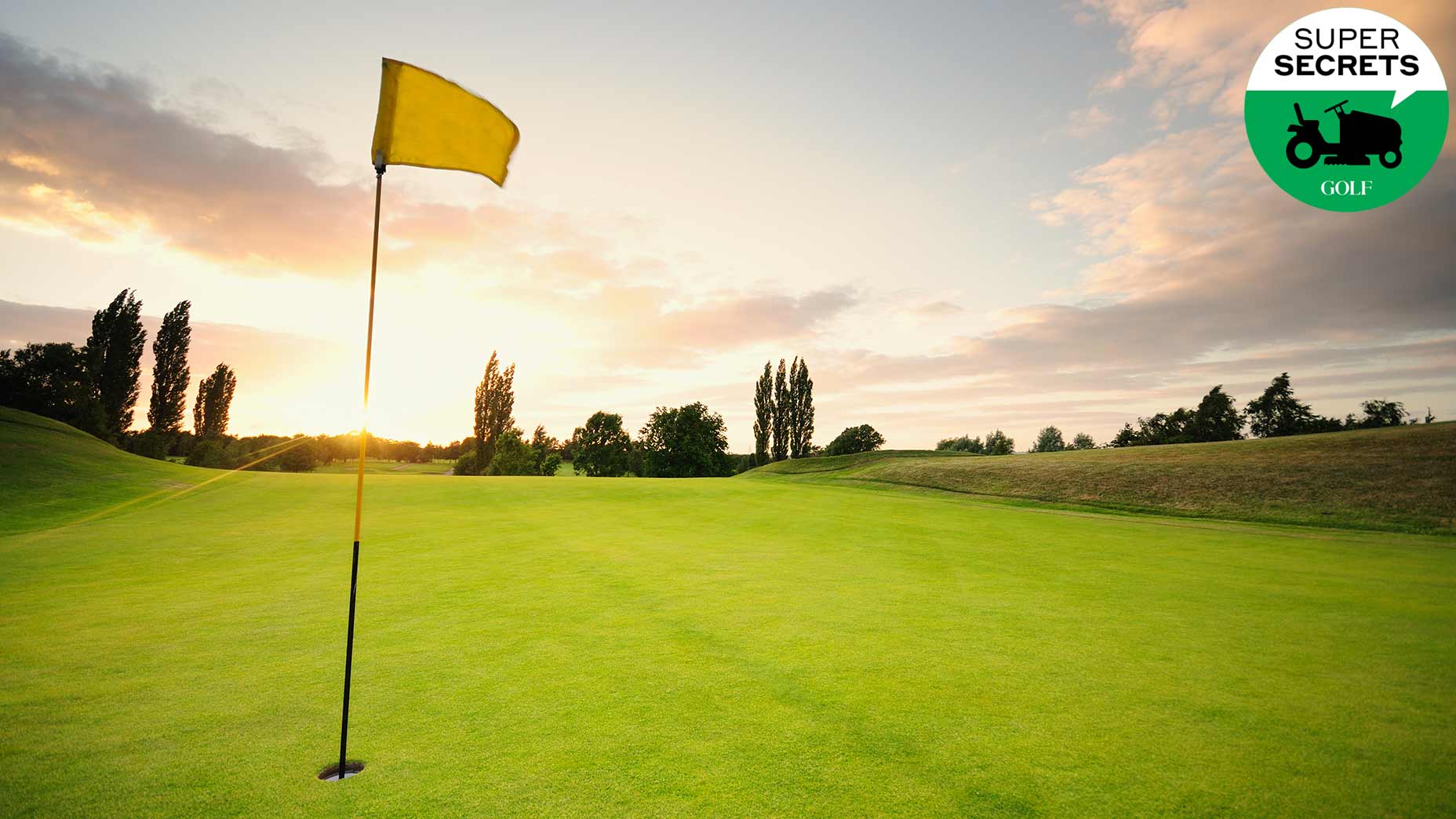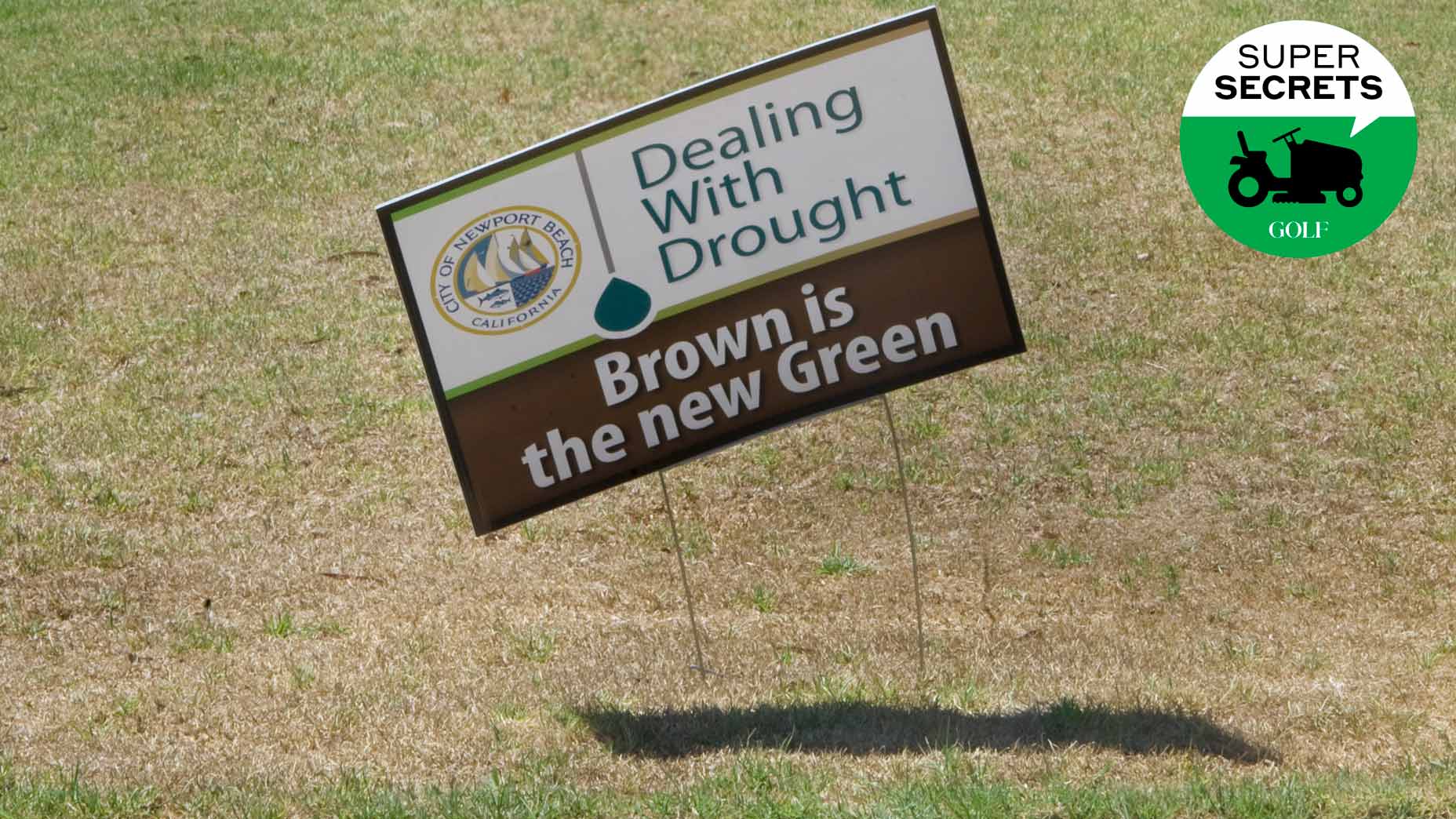Why it’s essential that you rake your yard, according to a golf-course superintendent

Warning: Don't leave your leaves sitting idle for too long!
getty images
Welcome to Super Secrets, where we pick the brains of the game’s leading superintendents. By illuminating how course maintenance crews ply their trades, we’re hopeful we can not only give you a deeper appreciation for the important, innovative work they do but also provide you with maintenance tips that you can apply to your own little patch of paradise. Happy gardening!
***
With autumn upon us, many golfers will soon be adopting some version of the “leaf rule,” that special dispensation we grant ourselves when balls go missing in fallen foliage.
Golf-course superintendents have a leaf rule, too: Get rid of them ASAP.
As pretty as they are when they’re up in trees, leaves can make things ugly when they drop to the ground and accumulate on grass, causing a range of short- and long-term problems.
As a New England native and longtime superintendent at George Wright Golf Course, just outside Boston, Len Curtin has been dealing with Mother Nature’s “litter” as far back as he can remember, both on and off the course.
GOLF.com asked him about the issues posed by leaves, how his team handles them and what tips might apply for those of us tending to our own fallen foliage at home.
Why leaves are a problem for turf
At George Wright, a heavily wooded course with a large population of mature oak trees, leaves usually become a problem for Curtin and his crew in late October and remain so through the turn of the year. In addition to hiding golf balls, leaves disrupt regular maintenance practices such as mowing, fertilizing and aerifying, which are crucial to preparing the course for winter. But that’s just for starters. The greatest harm leaves cause is to the grass itself.
When leaves are left to lie on top of turf, they block air flow (like all living things, grass needs to breathe) and blot out sunlight. Leaves make a welcome home for pests and disease. When those same leaves get wet and matted, it makes matters all the worse.
Given a chance to decompose, leaves can become a good source of nutrients for grass. But that requires the luxury of time. And given the quantity of leaves they’re faced with, Curtin and his crew don’t have that leeway. They’re in something of a race against the clock.
What happens if leaves aren’t cleared
Leaving leaves on turf through the winter results in one thing, Curtin says: dead turf in the spring. Leaves tend to collect in low points or wet spots on the course. When the temperature drops, they freeze in place, making them difficult to remove.
When snow covers those frozen leaves, a suffocating layer forms that smothers the life out of the grass underneath.
“I used to have arguments with our budget director,” Curtin says. “I would tell him that the leaves need to be cleaned up, and it will cost the same to remove them either now in or in April. But if you wait until April, you’ll also have a bunch of dead areas to sod.”
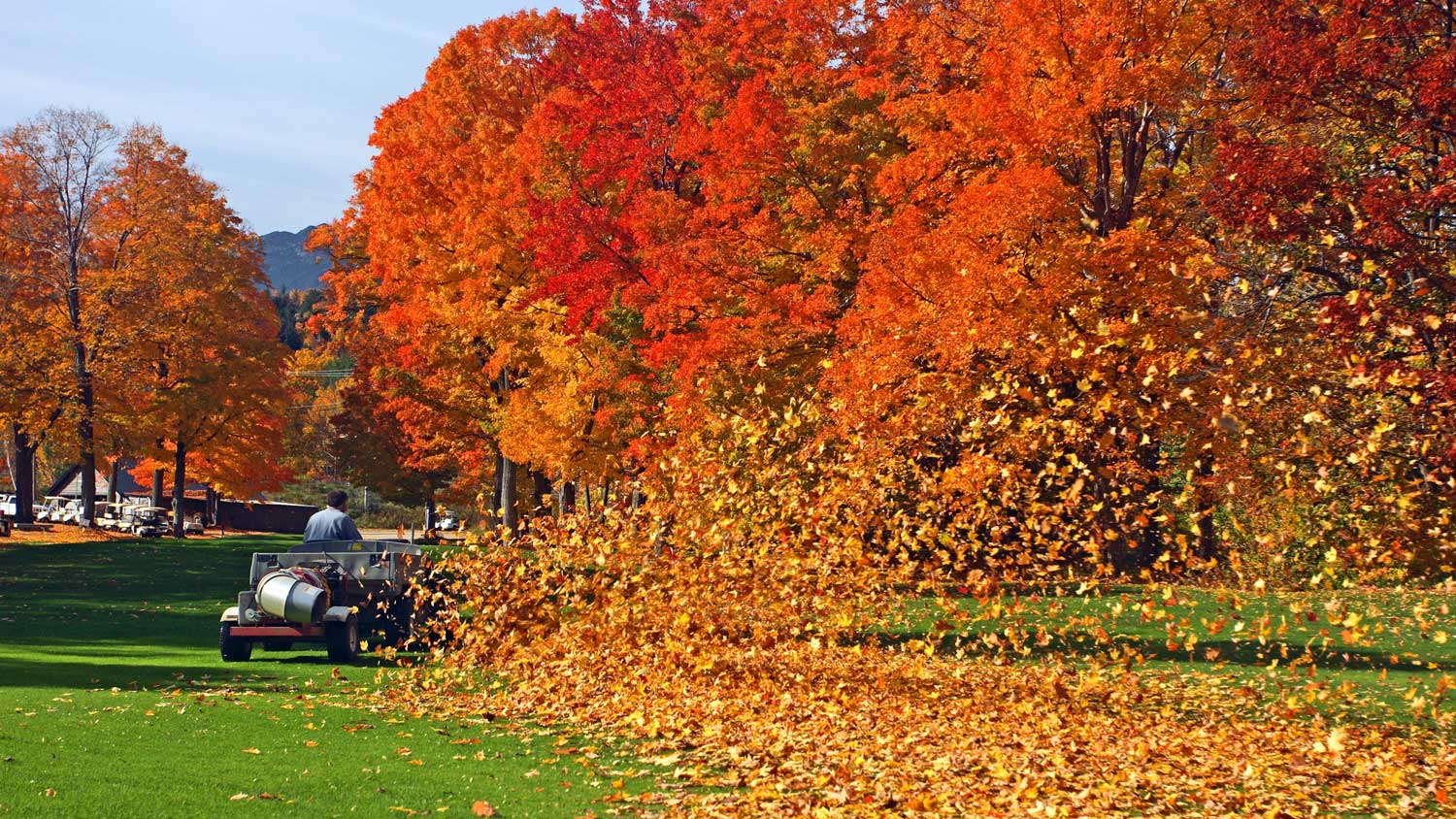
When you’ve got oak trees, acorns are another issue. Curtin and Co. take care to rake them out of bunkers (if left where they are, Curtin says, those acorns will germinate in the spring) and sweep them off of greens, tees, collars and fairways so that mowers don’t crush them into the playing surfaces, where they can cause all kinds of trouble.
Mostly, Curtin says, acorns ground into the turf are an aesthetic issue. “But I have hit a buried acorn on a fairway with an iron, and the club ricocheted like I had hit a tree root,” he says. What’s more, gouging acorns out of greens with hallmark-repair devices is an arduous task, and leaving them there is not an option. “They take forever to break down,” Curtin says. “And in large numbers, they can change soil pH.” Plus, no one wants a baby oak tree taking root where it shouldn’t be.
How golf courses remove leaves
From November to New Years, Curtin devotes six staffers to full-time leaf removal, a job they carry out with a combination of leaf blowers, vacuums and mulching machines. On average, they remove 55 to 70 dump truckloads of leaves each fall.
With large amounts of leaves, Curtin says, the most efficient method is to blow them into wind rows (aligned so that the prevailing winds on the course carry the leaves away from playing areas, not toward them), then vacuum them up. Smaller amounts of leaves are mulched, or blown into natural areas.
When and how to clear your own leaves
How quickly and deeply will leaves damage your own yard? That depends on a number of factors, including the height of your lawn, the amount of the leaves layered over it and whether those leaves are wet or dry.
The growth rate of your grass is another consideration. Earlier in the fall, when the sun is stronger and out for longer, grass grows faster than it does when the days get shorter and cooler. And the faster your grass grows, the more quickly it gets damaged, Curtin says. It can happen within as little as five or six days. Later in the fall, when growth has slowed, damage slows down, too. But it still happens, often within a couple of weeks, Curtin says.
On his own lawn, Curtin says, if he has a small enough accumulation of leaves that he can see through the leaf cover to the turf, he mulches the leaves multiple times and tries to work them into the canopy of his yard. Otherwise, he takes care to rake or blow them off the grass, and he recommends that you do the same.
Large or small, wet or dry, piles of leaves on your yard should be done away with because “they will severely damage the turf if left there all winter.” Consider it a tradeoff: more time and labor now for a healthy lawn come spring.


